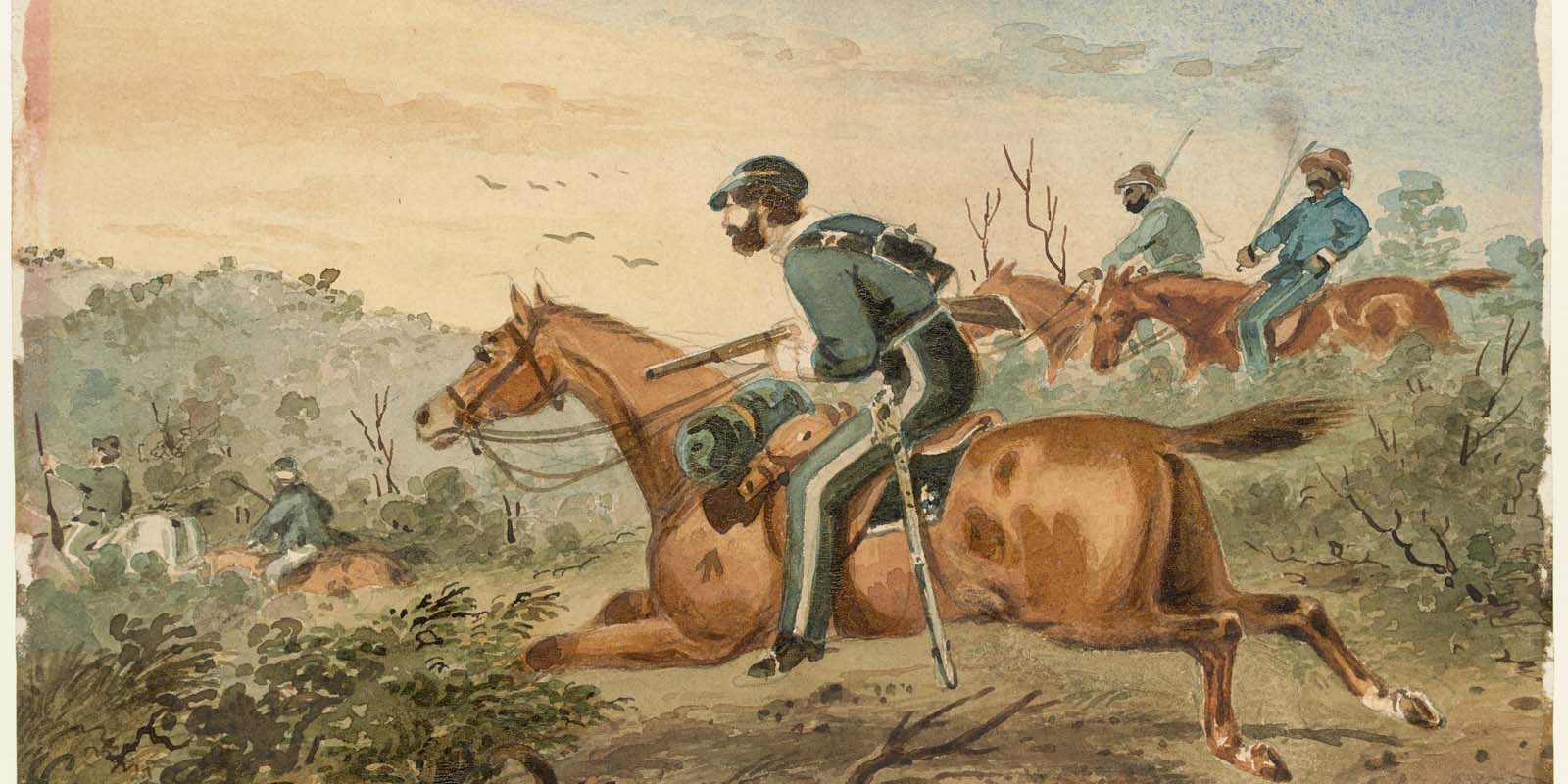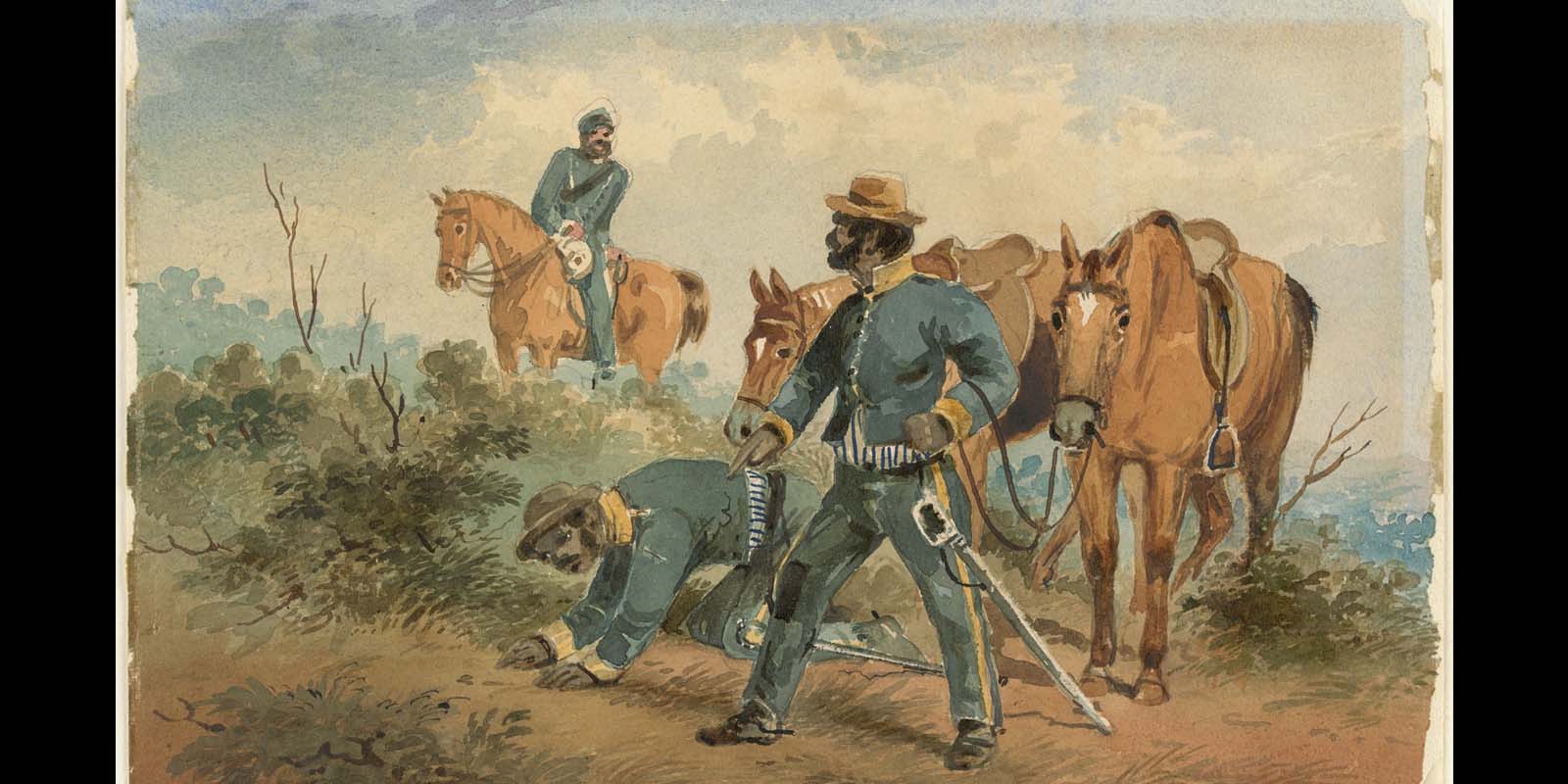‘Native’ police forces - police units made up of almost entirely Aboriginal people - were utilized across the country.
They were another attempt to further ‘civilize’ and assimilate our people. This entry focuses specifically on the Native Police Corps of Victoria.
Official Establishment
The idea of a ‘native police force’ was first suggested in 1837 as an alternative way to try to ‘protect’ and assimilate mob. It was hoped that members of this force would be educated in English and military discipline and that as a result they would abandon their traditional ways of life for what the colonists believed was a more ‘civilized’ way of living.
There were three separate attempts to establish this force, first in 1837, then 1839 and finally in 1842. The first two attempts failed until in February 1842, they were finally successful in establishing the Native Police Corps.
It began with 25 Aboriginal men who arrived at the depot in Narre Warren and enlisted to join the Native Police Corps. The numbers fluctuated over the years and 1851 the number of Aboriginal troopers was 45.
They operated under the command of Sir Henry Dana who, along with his second in command Dudley Le Souef, trained the men for mounted police duty. All of this was overseen by assistant protector of Aborigines, William Thomas.
Overall the colonists viewed the native police troops as a success and the members were professional and ‘acted with the military efficiency and bearing demanded of them’ however one area that is noted to have been a weakness was Sir Henry Dana’s refusal to utilize the men’s tracking abilities preferring them act as mounted police.


Image: Troopers after bushrangers, State Library Victoria.
Duties
The Native Police Corps main roles were to
- patrol the bush to find bushrangers or any suspicious person
- check the passes of those who appeared to be a prisoner
- carry messages out to colonial outposts
- assist in searches for lose lost in the bush
- act as an escort for travellers including prisoners, dignitaries and senior office holders
After the discovery of gold in Victoria the native police corps were utilised as some of the first law enforcers on the goldfields. They conducted patrols, guarded sites and were known for their ability to maintain order usually through ‘heavy-handed tactics’ and were generally feared by those they policed. They also acted as gold escorts, helping to safely transport large amounts of gold.
Unfortunately, throughout the time the native police operated there were many instances where they were required to act against their own people. This left casualties on both sides and resulted in many of the members in the native police corps deserting or turning to alcohol to cope. Some felt they had to enact the orders of their commander as they were threatened with imprisonment and harm if they did not comply.


Image: Troopers after bushrangers, State Library Victoria.
Native Police Corps Disbanded
Due to the continuing decline in numbers the Native police corps was disbanded in early 1853. There were many factors that resulted in the declining numbers such as
- the death of Sir Henry Dana which resulted in many men leaving
- the increasing tasks being placed on the troops including acting as prison guards
- more employment opportunities from other avenues
- the difficulty in policing their own people
Ultimately while the corps was completely disbanded, there were instances following 1953 where the government and the police utilised mob and their skills in a less formal way other states also continued to have some form of Native Police for many years after this.
Sources
- Native Police Corps, Research Data Australia
- Dana, Henry Edward Pulteney (1820–1852), Australian Dictionary of Biography
- Trackers and Native Police, ANU
- The Native Police Corps, GOLD
- Native Police, The Aboriginal History of Yarra
